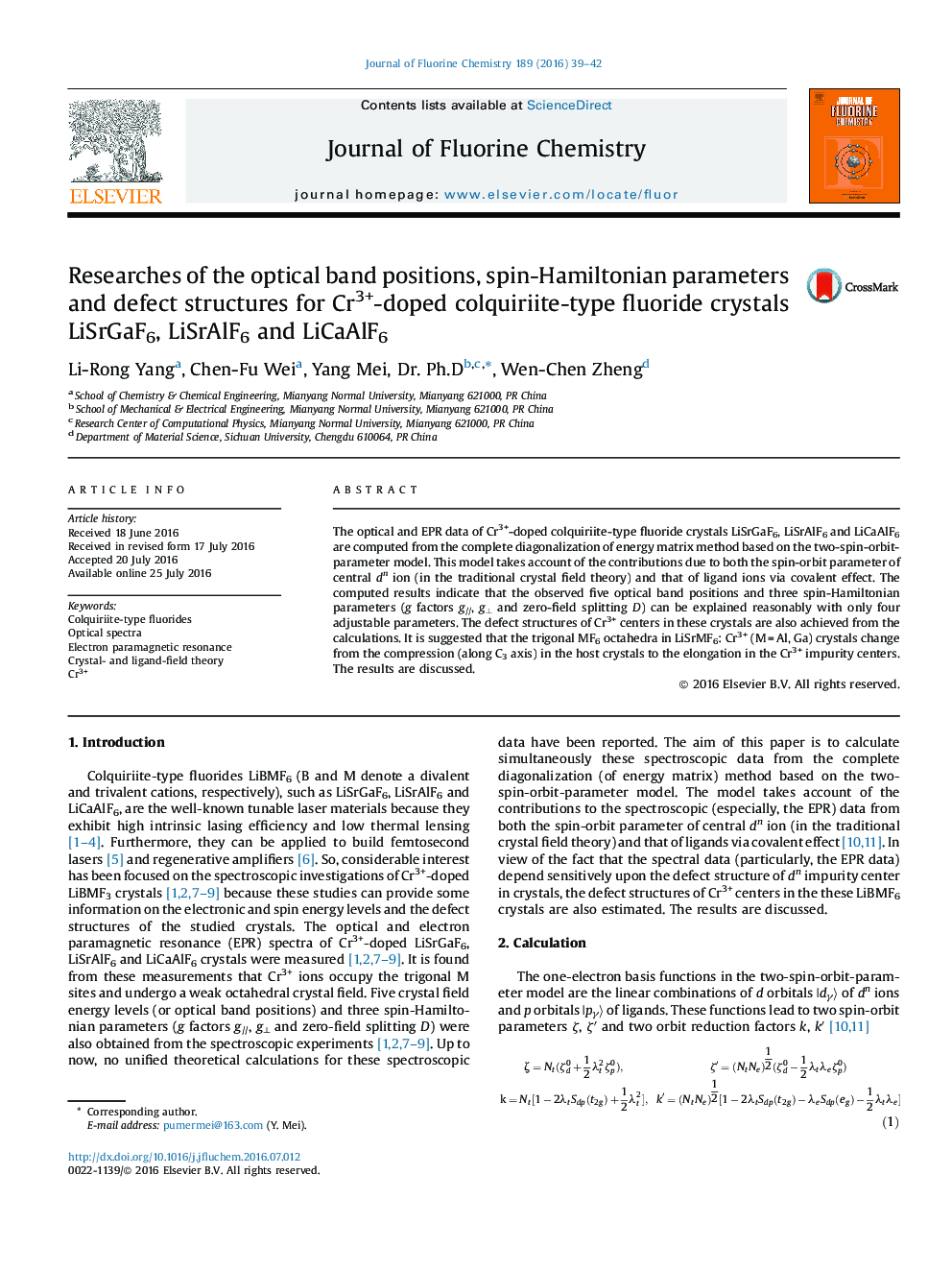| Article ID | Journal | Published Year | Pages | File Type |
|---|---|---|---|---|
| 1313500 | Journal of Fluorine Chemistry | 2016 | 4 Pages |
•Optical and EPR data of trigonal Cr3+ centers in LiBMF6 are calculated.•Diagonlization method based on two-spin-orbit-parameter model is used.•The calculated results agree with the observed values.•Local structures of Cr3+ centers in LiBMF6 crystals are estimated.
The optical and EPR data of Cr3+-doped colquiriite-type fluoride crystals LiSrGaF6, LiSrAlF6 and LiCaAlF6 are computed from the complete diagonalization of energy matrix method based on the two-spin-orbit-parameter model. This model takes account of the contributions due to both the spin-orbit parameter of central dn ion (in the traditional crystal field theory) and that of ligand ions via covalent effect. The computed results indicate that the observed five optical band positions and three spin-Hamiltonian parameters (g factors g//, g⊥ and zero-field splitting D) can be explained reasonably with only four adjustable parameters. The defect structures of Cr3+ centers in these crystals are also achieved from the calculations. It is suggested that the trigonal MF6 octahedra in LiSrMF6: Cr3+ (M = Al, Ga) crystals change from the compression (along C3 axis) in the host crystals to the elongation in the Cr3+ impurity centers. The results are discussed.
Graphical abstractThe optical and EPR data of Cr3+-doped colquiriite-type fluoride crystals LiSrGaF6, LiSrAlF6 and LiCaAlF6 are computed from the complete diagonalization of energy matrix method based on the two-spin-orbit-parameter model. The defect structures of Cr3+ centers in these crystals are also achieved from the calculations.Figure optionsDownload full-size imageDownload as PowerPoint slide
